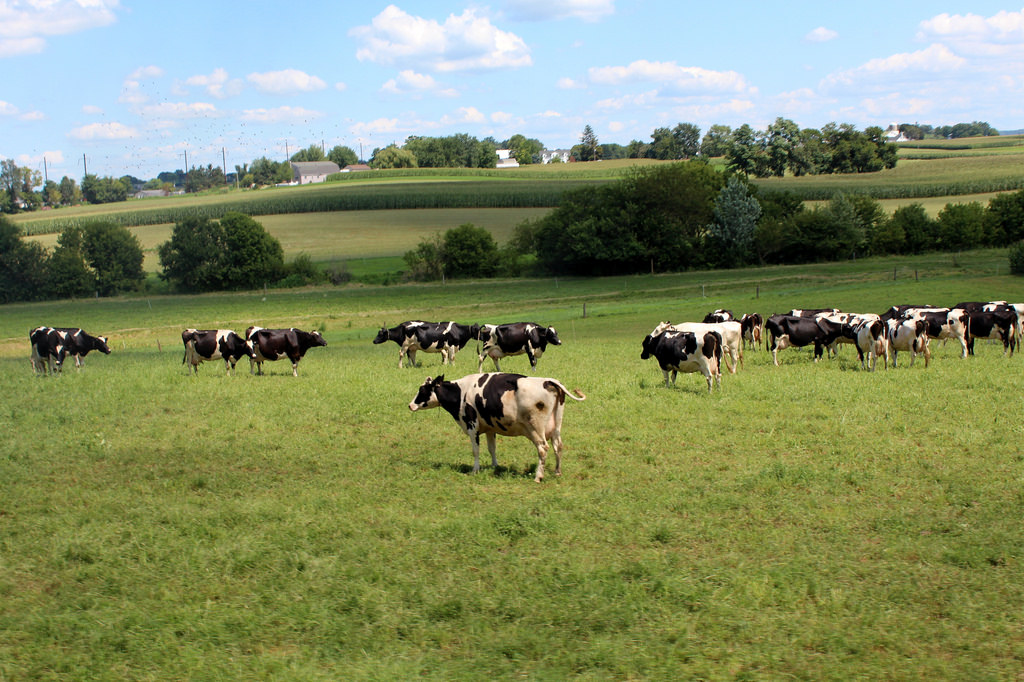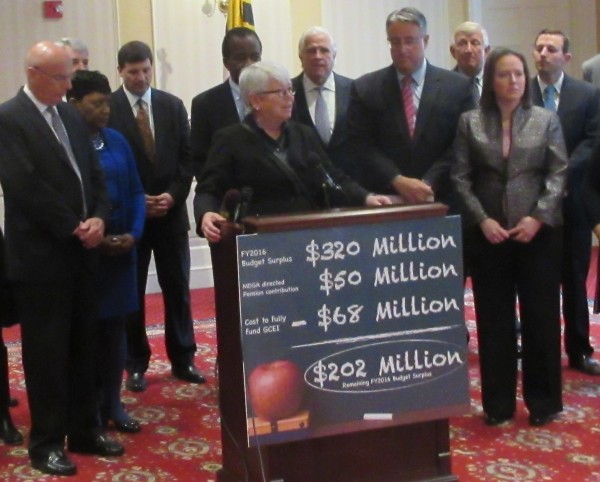This article is Part 3 of our special report, The Bay’s Pollution Diet: Is it Working By Karl Blankenship
Bay Journal
Across the Chesapeake Bay watershed, controlling runoff from agriculture and stormwater has proven difficult for decades.
Nowhere is the problem greater than in Pennsylvania, which has more of both than any other state in the Bay region — and where efforts to control them are the farthest off track.
Whether that trajectory changes may ultimately determine whether the latest Bay cleanup plan — the Chesapeake Bay Total Maximum Daily Load, or “pollution diet” — is deemed a success.
“Pennsylvania is going to be the key,” said Nick DiPasquale, the recently retired director of the U.S. Environmental Protection Agency’s Bay Program Office. “They are going to need a lot of help.”
Based on the EPA’s 2017 assessment of the cleanup effort, Pennsylvania accounts for about half of the region’s shortfall in meeting its nitrogen reduction goal and is the only state that also missed its goals for reducing phosphorus and sediment.
Pennsylvania does not border the Chesapeake Bay but is intimately linked to its health. The Bay is, in geologic terms, the ancient bed of the Susquehanna River, which drains half of Pennsylvania, as well as a portion of New York and a bit of Maryland. (A small part of Pennsylvania is in the Potomac watershed. The Delaware River is its eastern border with New Jersey.)
The Susquehanna supplies about half of the freshwater to the Bay — and more than two-fifths of the nitrogen pollution. Because the mouth of the river is at the head of the Bay, those nutrients tend to have an especially large impact on the Chesapeake’s health.
Pennsylvania produces more runoff from agriculture and stormwater than any other state in the Bay watershed.
About 59% of its nitrogen load to the Bay comes from the runoff generated by 33,000 farms, according to Bay Program figures. Another 14% comes from runoff that originates on developed land, often from small communities sprinkled throughout the landscape. The amount of nitrogen from both of those sectors has increased in the state since the TMDL went into effect in 2010.
Still, Pennsylvania has reduced its overall nitrogen load to the Bay since 2010 — by about 4.8% — but the reduction has come almost entirely from upgrades at wastewater treatment plants. In Pennsylvania, though, those plants account for less than a tenth of the nitrogen that ultimately reaches the Bay. This leaves a huge amount of additional reductions needed from agriculture and developed lands.
Past EPA reviews have laid out a host of woes that got Pennsylvania into this situation. The state has lacked the ability and capacity to oversee its stormwater and agricultural programs or to enforce existing regulations. Although Pennsylvania has the largest agricultural sector among the Bay states, it puts the least amount of state funding into conservation programs. It has even done a poor job of managing federal grants aimed at helping the state address its problems, the EPA has said.
To meet Bay cleanup goals, Pennsylvania between now and 2025 would have to accomplish more than 70% of the remaining nitrogen reductions needed from the entire Bay watershed. And that doesn’t account for additional reductions needed to offset the impacts of increased precipitation from climate change and the filling of the Conowingo Dam reservoir, both of which will deliver more nutrient pollution to the Bay, and both of which have disproportionately large impacts in Pennsylvania.
‘Clearly behind’ but committed
At an August meeting, Pennsylvania Environment Secretary Patrick McDonnell acknowledged to other cleanup leaders that the state was “clearly behind” but “committed to developing a plan that gets us to 2025.”
McDonnell also said the state anticipates that 80% of its needed nutrient reductions will come from farms. That means that from now through 2025, their farmers would have to accomplish 11 times what was achieved by farms throughout the entire Bay watershed since 2010.
The number and relatively small size of many Pennsylvania farms makes the task even harder because working with so many individual farmers requires a huge amount of resources.
“If they accomplish a good third of what they have committed to do by the 2025 deadline, that would be huge,” said Rich Batiuk, the retired associate director for science with the EPA’s Bay Program Office. Batiuk had a leading role in crafting the TMDL and overseeing its implementation. He estimated that Pennsylvania will need to come up with $100 million to $200 million a year just to help farmers implement programs.
If keeping states on pace was one of the key goals of the TMDL, how did Pennsylvania get so far off track?
How did Pennsylvania get off track
“The bottom line is that EPA has not fully exercised its options — and what is listed clearly for the partnership and the public — of tools that it has,” Batiuk said.
In a letter sent to states in 2009, the EPA outlined “consequences” that states might face if their efforts fell behind. It included actions such as requiring additional nutrient reductions from wastewater treatment plants, withholding clean water grants and directing how that money is spent. Another option is to draw more animal feedlots under its regulatory umbrella.
The EPA has twice temporarily withheld grant funding from Pennsylvania to prod it toward specific actions. But withholding money from a cash-strapped state isn’t ideal.
“Some of the tools that EPA has, like withholding funds, doesn’t really help them get the job done,” DiPasquale said.
The EPA does have the authority to require greater reductions at wastewater treatment plants and has warned Pennsylvania that it could do so. Although most of the state’s largest wastewater treatment plants have been upgraded, they still allow higher nitrogen concentrations in their discharges than other states.
But Pennsylvania’s wastewater contributions are so small that, even if all of those discharge pipes were corked, it would only get the state a quarter of the way to its goal and would come at a high cost.
Local wastewater authorities already have spent $1.4 billion to upgrade 191 treatment plants. Another round of upgrades could cost an additional $2 billion to achieve even smaller results, said John Brosious, deputy director of the Pennsylvania Municipal Authorities Association.
“That has been a bone of contention with our [wastewater] sector. In the 13 years that we’ve been at this, we have done every single thing that has been asked of us, and more,” he said. “‘No good deed goes unpunished’ — we’ve had guys saying that.”
EPA’s reach is limited
The EPA’s regulatory reach is limited too, particularly for agriculture. Typically, the EPA regulates dairy operations with 700 or more cows. But it can regulate smaller operations if they are contributing to a water problem, as the agency has warned it could do. Several years ago, though, the agency reviewed Pennsylvania’s Lancaster County and concluded it would have to regulate farms with as few as 50 cows to cover half of the dairy manure produced in the county — something it concluded was unworkable.
The enforcement framework in the Bay TMDL was patterned after the Clean Air Act in which the federal government sets overall standards, and states develop and implement the needed actions. If states fail to meet goals, they can lose federal highway funding — a huge amount of money. The consequences under the Bay TMDL, though, do not have the same degree of leverage.
Still, some argue that the agency could take other actions, such as yanking grant funds from the state and giving them to a third party to implement on-the-ground cleanup programs, or further ramping up enforcement and oversight activities.
The threat of additional actions has had some impacts already. The state has dramatically ramped up its inspections of farms to make sure they have required manure and erosion management plans. It also has launched the most aggressive effort of any Bay state to develop new county-level cleanup plans showing how the state could reach its 2025 cleanup goals. It is working to target problem areas to better focus its cleanup efforts.
The Pennsylvania General Assembly is also debating legislation that could charge large water users a fee that would be used to help fund the state’s faltering cleanup efforts.
Buy-in from farmers needed
John Bell, government affairs counsel with the Pennsylvania Farm Bureau, praised the state’s recent efforts to develop local plans, with input from farmers and others, which will more clearly lay out what needs to be done. Such extensive outreach didn’t happen with the state’s earlier cleanup plans, he said, and resulted in strategies that many thought were unrealistic. The latest effort, he said, is a process that can win buy-in from farmers, but he added “there still needs to be an element of patience” and that farmers need to be able to view it as realistic.
Bell also cautioned that “if this exercise becomes one of ‘let’s pass more regulations and laws and ordinances’ that attempt to restrict practices and uses, that is going to be problematic.”
How much patience others have remains to be seen. Some think that if Pennsylvania’s shortfall is an obstacle to Bay recovery, it may spur a lawsuit either by another state or an environmental group as an attempt to force more aggressive actions.
Batiuk also said he thought it likely that others would sue if the state isn’t showing more progress. But, he said, “I would hope that the states would put more pressure on EPA to take action versus they themselves feeling the need to do it.”
Maryland Environment Secretary Ben Grumbles, who chairs a committee of senior state and federal agency officials that helps guide Bay policy, said the EPA needs to not only play the role of umpire in assessing state progress, but take action.
“In order for it to be meaningful and real, you do need evidence that EPA follows through on its consequences memo,” he said, adding that “you absolutely need as well, however, the development of different tools and funding sources.”
Punishing Pa. vs. incentives
Not everyone thinks EPA actions need to be punitive, though. “Pressure is one thing,” Capacasa said. “I would speak to the power of affirmation.”
Capacasa said that while the EPA has a role in overseeing the TMDL’s implementation, the agency acting alone “is an imperfect solution” because its tools are limited.
“It is up to the Bay community as a whole to hold states and jurisdictions accountable for results,” he said. The EPA can do a better job working with states to get programs on track, he said, and the region as a whole can do more to share knowledge about programs that work — and how they can be improved.
“We can poke our fingers in their chest all we want,” agreed James Davis-Martin, the Chesapeake Bay program manager with the Virginia Department of Environmental Quality and co-chair of the Bay Program workgroup that helps evaluate cleanup actions. “It is not going to make more implementation happen on the ground. Helping them develop new programs and get them implemented in one year rather than three years, that is what is going to get more stuff on the ground.”
Martin said that while it was unlikely Virginia would ever send money to Pennsylvania to implement programs, it could possibly send staff to advise on areas where Virginia has made progress, and how those programs could be adapted to another state.
‘This could get ugly’
Determining how the EPA should exercise its oversight will likely become a bigger issue in coming years, as the region faces its significant shortfall in nitrogen control efforts. While Pennsylvania has the biggest hurdles, New York’s nitrogen numbers have decreased only slightly since the TMDL went into effect, and Maryland and Delaware both missed their nitrogen goals. Nearly all states face hurdles in getting, or keeping, their agriculture and stormwater sectors on track — where most remaining nitrogen reductions must come from.
“This could get ugly,” warned Jeff Corbin, one of the EPA’s former Bay experts who now works for a private environmental restoration firm. “We are starting to max out on the goodwill and the voluntary actions. Now we are getting into some really tough situations where we don’t have the money, we don’t have the regulatory authority, and what happens now?”






Recent Comments